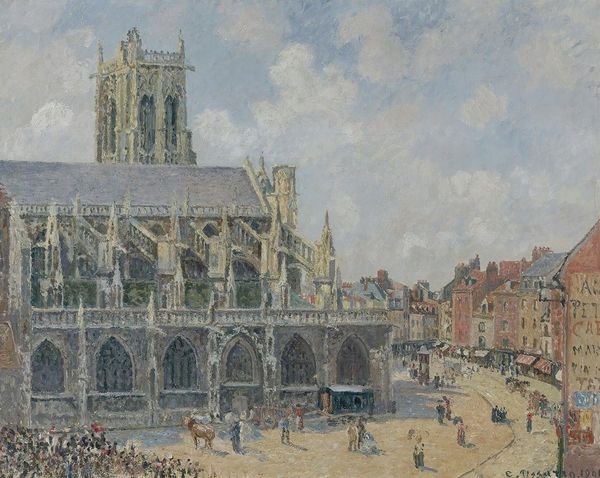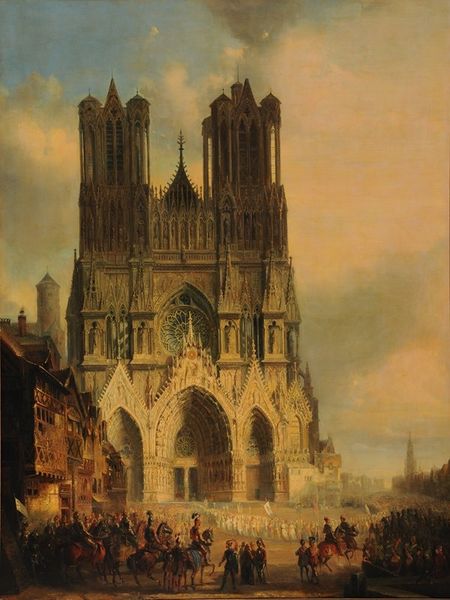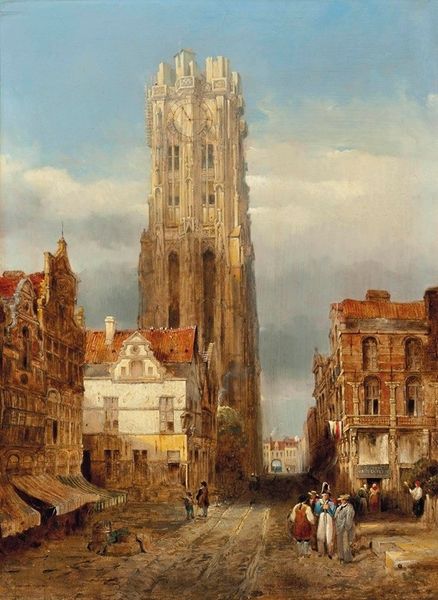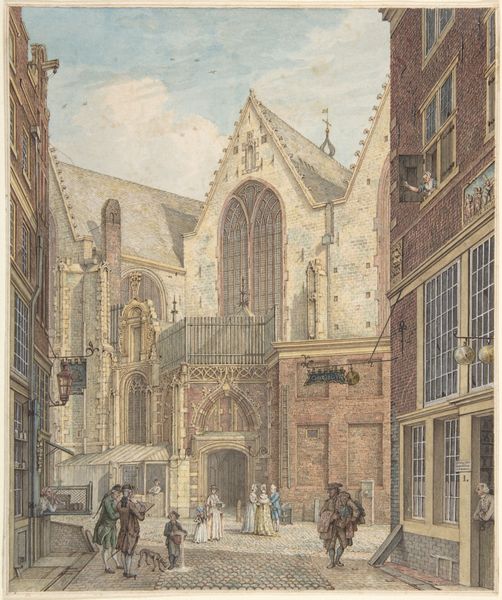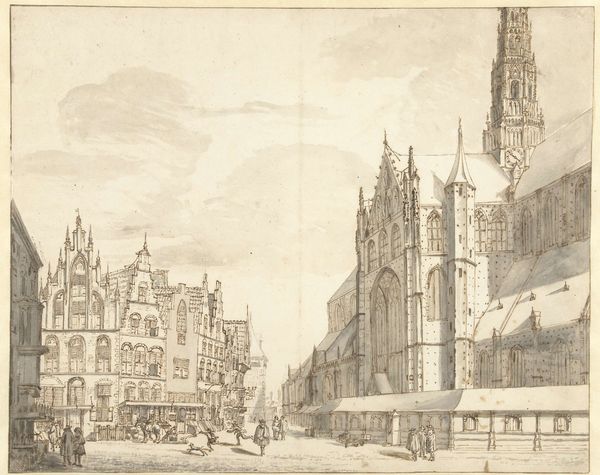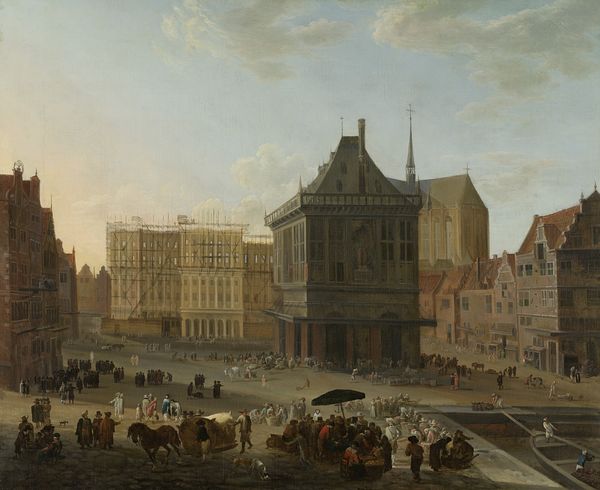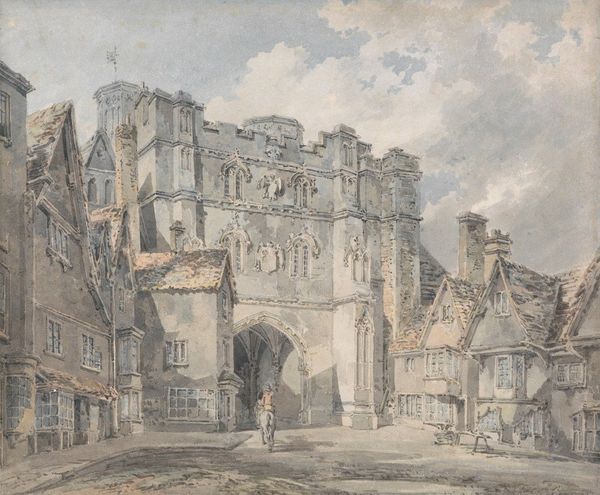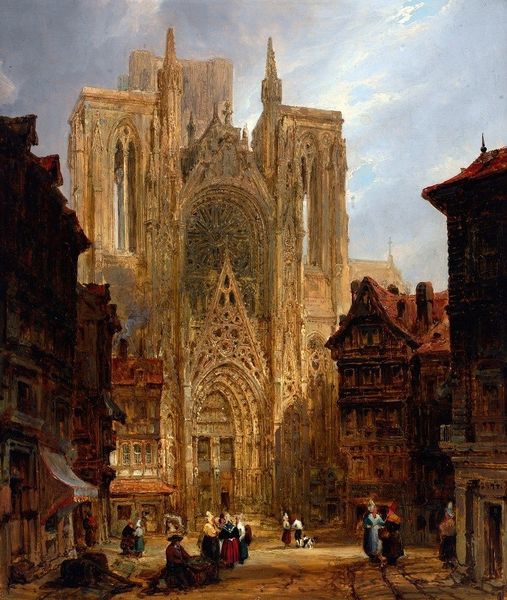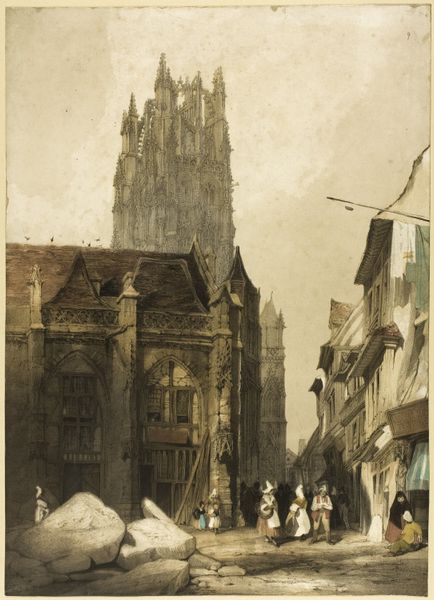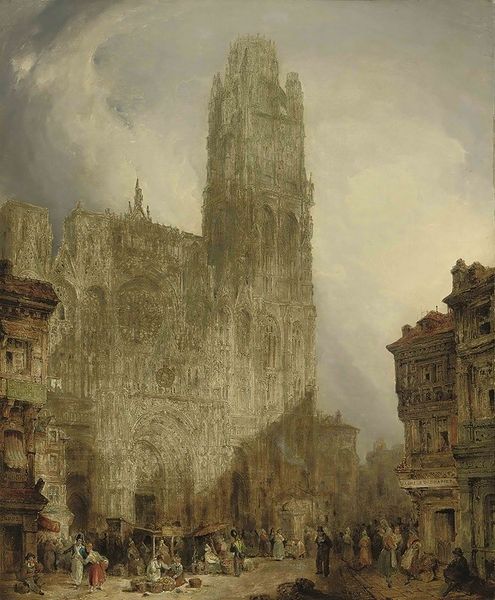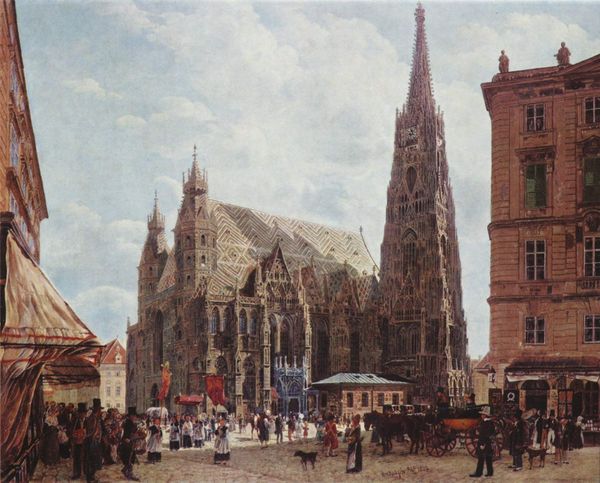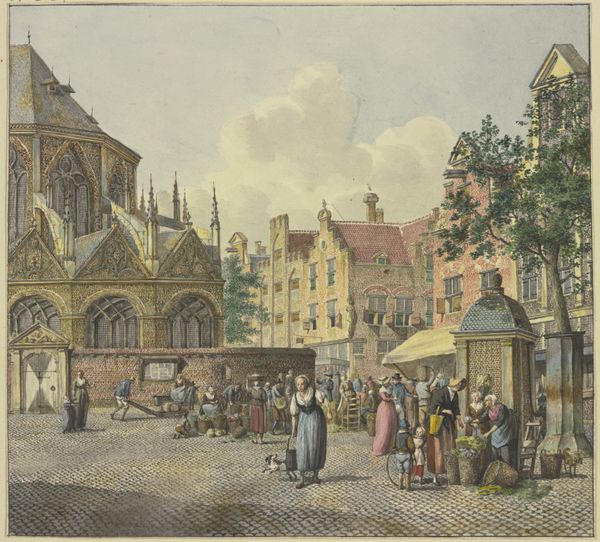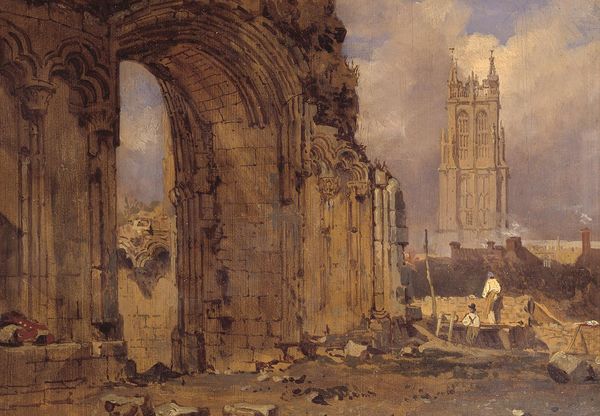
Dimensions: height 81 cm, width 106.5 cm, depth 9 cm
Copyright: Rijks Museum: Open Domain
Editor: Here we have Kasparus Karsen’s “View in a Town,” painted sometime between 1840 and 1880. The artwork is oil on canvas. I’m really drawn to the contrasting scales in the painting - you've got these imposing, solid buildings looming over the smaller human figures bustling in the town square. What kind of story do you think this tells about the society depicted? Curator: Well, considering this was painted in the mid-19th century, when urbanization was rapidly changing the European landscape, Karsen's "View in a Town" speaks volumes about the social and cultural dynamics of the time. The grandeur of the architecture—the cathedral specifically—versus the smaller figures underscores the enduring power structures of the church and state, wouldn’t you agree? Editor: Absolutely. It does seem to be commenting on the dominance of the institutions at the time, placing importance in religion as a whole. Does the depiction also reflect the political power of these architectural mainstays in the city? Curator: Precisely. Cathedrals were not only religious centers but also symbols of civic pride and, indeed, political authority. This positioning of power might implicitly criticize the lived realities of everyday people, the ‘genre painting’ aspect adding commentary on social classes, occupations. How do you think Karsen used light and shadow to amplify this sense of power and social structure? Editor: That’s fascinating. The way light emphasizes the height of the church while casting a shadow on some of the figures almost seems to further reinforce that societal hierarchy you mentioned. Curator: Exactly! It invites viewers to reflect on the socio-political environment. Considering its context within Romanticism, does the work’s idealization conflict with reality, or does it perpetuate the image that institutions desire to convey about their prestige? Editor: I think it attempts to find a balance, depicting daily life alongside the grander backdrop. This has opened my eyes to a new way to see art as a reflection of cultural narratives and social power. Curator: And hopefully understand the vital public role of art itself. There's much more beneath the surface.
Comments
No comments
Be the first to comment and join the conversation on the ultimate creative platform.
